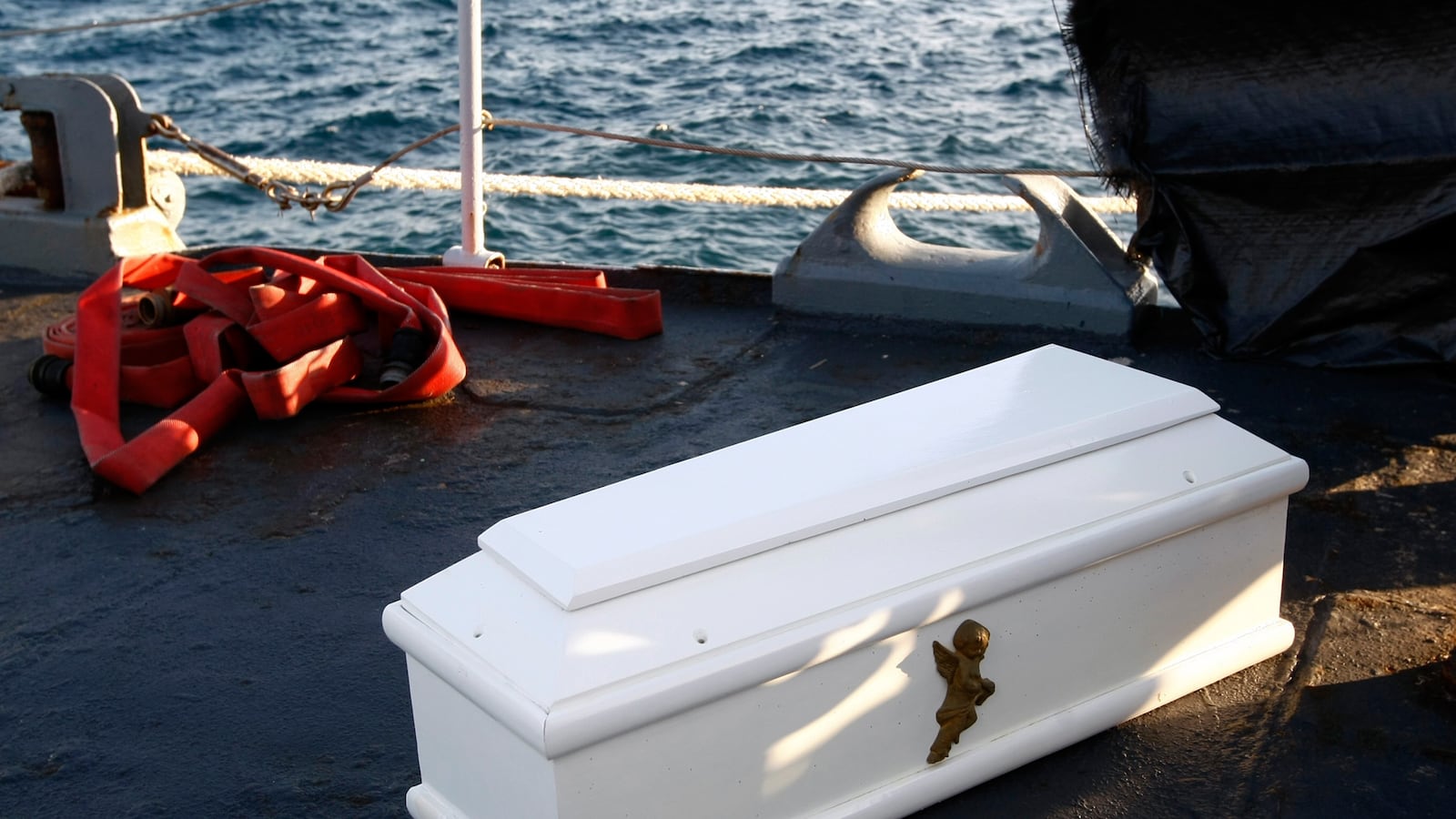ROME, Italy — The rickety fishing boat that left the Egyptian port of Damietta on September 6 was a standard issue death trap. At 25 meters long, the old vessel could easily hold its passenger load of more than 500 Syrians, Palestinians, Egyptians and Sudanese men, women, families and unaccompanied minors —albeit uncomfortably and far over the capacity for which it was intended.
With a ticket price of more than $1,500 per passenger, it was an extremely lucrative venture for the traffickers who sell the promise of new life and who generally set sail with only half that many on board. Despite the waning days of the summer when sudden storms can make the journey from the North African coast to Europe even more dangerous than it usually is, the seas were calm and the intended plan was to land on Malta or Lampedusa within a week. The passengers would never make it. All but a dozen died off the coast of Malta.
While migrant ship tragedies at sea happen all too often, the latest sinking appears to have been no accident.
Unlike most of the traffickers who eventually either abandon the ships or meld in with the migrants, these traffickers had devised a bucket brigade plan to pass their human cargo between a series of increasingly smaller vessels mid-journey, always taking the bigger boats back for more refugees, according to survivors.
Since the Italian navy’s Mare Nostrum search and rescue mission began patrolling the seas last winter, trafficking in humans has become an increasingly risky business. The plan to pass the migrants between boats was a defensive measure by the traffickers who clearly thought they would stand a better chance of escaping Mare Nostrum by passing the passengers along the chain. If caught, they could also argue that they hadn’t actually brought them from North Africa but instead picked them up at sea.
Before the Italian Navy’s program to save ships in distress at sea, the traffickers generally brought the ships to within a few miles of their destination where they met up with accomplices who whisked them away in speed boats while the migrants were left to fend for themselves.
Migrants often told tales of the navigators pointing ships toward the island of Lampedusa or Malta where they simply crashed into the rocky shores in the absence of a helmsman. Other times, the traffickers tried to blend in with the migrants and refugees. If caught, at worst they would get deported back to their home countries. At best, they would be processed and free to return home to sail again.
Since Mare Nostrum, more than 60 traffickers have been arrested when their boats were intercepted or rescued at sea. They are being held in a prison in Sicily and await judicial action. Most will spend ten or more years in prison.
The only problem with the plan to pass the passengers was that eventually the migrants refused. According to two Palestinian survivors who spent a day and a half in the water before being rescued, the boat they had been on for just a day was met by yet another smaller vessel “for the umpteenth time” about 300 miles off the coast of Malta and the migrants, who were by then extremely tired, hungry and sea wary, were ordered to once again jump onto the smaller ship to continue the journey.
According to reports from refugee aid groups in Sicily who spoke to the survivors, when the migrants refused to transfer yet again, the trafficker from the mother ship allegedly hopped onto the waiting ship, which then rammed the vessel full of migrants until it sank. The smugglers then sped off, leaving as many as a hundred people floating in the water.
Only a dozen survived, including two children who were saved when a merchant ship called the Pegasus spotted them floating in the sea. They said that the rest eventually sank beneath the surface—some after bobbing in the water clinging to debris for several hours.
One of the two Palestinian survivors said he shared a life buoy with several other passengers who all eventually passed out from fatigue and drowned. He told authorities that one of them was a young Egyptian man who was hoping to work in Europe to raise money to send back to pay for his father’s heart operation.
“If this story, which is being investigated by the police, is confirmed, it would be the most serious shipwreck in recent years, because it would not be an accident, but a mass murder perpetrated by multiple criminals without scruples or respect for human life,” said Flavio Di Giacomo, the Italian spokesperson for the International Organization for Migration in a statement.
If corroborated with the recovery of the drowned, the Maltese massacre would be the single most deadly migrant wreck in the waters between the coast of North Africa and Europe after the October 2013 sinking of two migrant boats off Lampedusa that killed more than 400 people.
Topping another dubious record, the Maltese wreck, coupled with yet another disaster on Sunday when as many as 200 other migrants and refugees are believed to have drowned off the coast of Libya, makes it the most deadly four-day period for migrant deaths on record. That is, of course, the “most deadly” that anyone knows about. It is probable that many more ships have sunk without any survivors, their stories never told and their dreams of a better life forever lost at sea.






